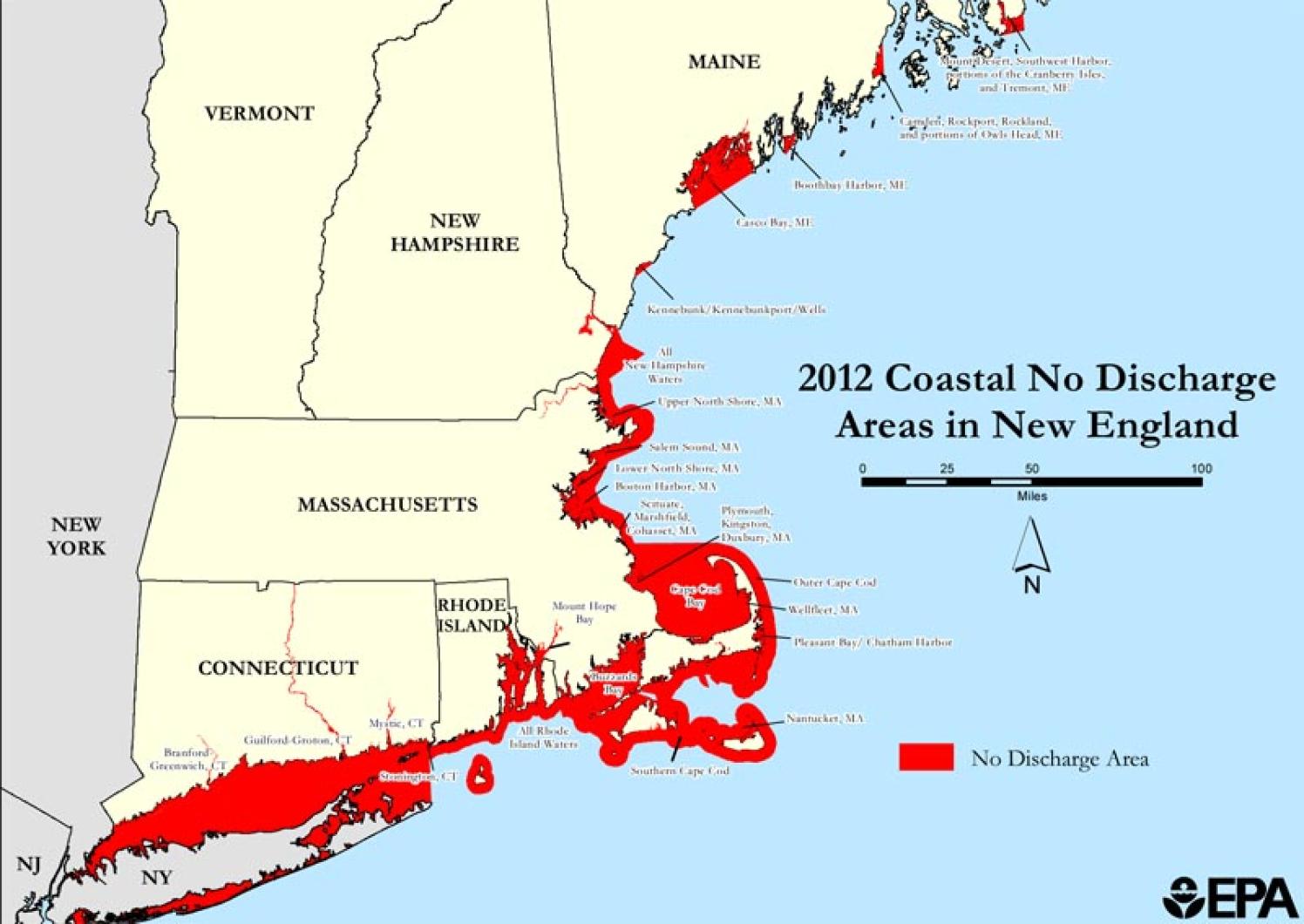State and federal environmental officials have formally designated the waters surrounding Martha’s Vineyard and south of Cape Cod off limits for the discharging of boat effluent. The designation means that nearly 95 per cent of state waters around Massachusetts are closed to effluent discharge. State Energy and Environmental Affairs and U.S. Environmental Protection Agency officials made the announcement on Friday at a gathering at Aselton Park in Hyannis.
From now on all boats, with a temporary exception for Steamship Authority ferries, are prohibited from discharging their sewage into these state waters. The designation of these waters, called the South Cape Cod and Islands No Discharge Zone, adds one more zone to the 16 distinct areas around the state that are closed.
“EPA is thrilled that Massachusetts has achieved this significant milestone in protecting coastal water quality and our local environment,” said Curt Spalding, regional administrator of EPA’s New England Office, at the Hyannis meeting. “There are few environments more special than the beaches and bays of Massachusetts, and now our citizens and visitors can rest assured that we are doing everything we can to protect these cherished environments.”
Nantucket was among the first areas in the Commonwealth to be designated a no discharge area and that was in 1992. The new no-discharge zone expands the closed waters around Nantucket to include all the state waters south of Cape Cod and include Martha’s Vineyard. The only exemption is the federal waters inside Nantucket Sound.
Also, by agreement, a narrow area traversed by Steamship Authority ferries is exempt for several years, until the authority can upgrade shoreside facilities and make modifications to all of its ferries that serve the two Islands. The Steamship Authority expects the conversion to cost $3 million. Last year the authority received a $1.27 million federal grant administered by the state to cover the costs of the landside conversion.
The steamship authority recently awarded the $1,893,000 contract for the landside conversion work to Robert B. Our, Inc., of Harwich. Wayne Lamson, general manager of the SSA said that the bid came in lower than they expected. They had expected it would cost $2 million.
The work in Vineyard Haven will be done this winter at a cost of $435,000.
The new designation protects 26 miles of coastline and encompasses 733 square miles of state waters.
With this designation, discharges of treated and untreated boat sewage are prohibited within the town boundaries of Chilmark, West Tisbury, Tisbury, Oak Bluffs, Edgartown, Gosnold, Falmouth, Mashpee, Barnstable, Yarmouth, Dennis, Harwich, Chatham and Nantucket.
“With the help of our community leaders and federal partners, the dream of clean coastal waters up and down the Massachusetts coastline is now a reality, protecting our precious marine habitats and recreational areas for years to come,” said Gov. Deval Patrick.
A key part of the lengthy designation process was tied to the ability of local towns to provide a working alternative to dumping effluent at sea. All the Island’s harbors provide free pumpout services to visiting boaters. In the past, boaters could dump their human waste overboard when at sea. Now that it is prohibited in state waters, boats need a place to pump out.
Jo-Ann Taylor, a coastal planner with the Martha’s Vineyard Commission, was a key participant in the coordinating effort to bring town parties together, which included planners, harbor masters and harbor advisory groups. Goes back to getting the towns their pumpout boats, as much as 20 years ago. “I am very happy this has been achieved,” Ms. Taylor said. “It will positively impact the water quality of our waterways. The towns together with the state stepped up to make this happen,” she said.
Now, all the state’s harbor masters and their departments are charged with working with the boating public to see that the boats are pumped out.
Ms. Taylor said she is disappointed that the federal waters in Nantucket Sound, referred to often as the doughnut—where Cape Wind is building its wind turbines—are excluded.
Jay Wilbur, harbor master of Vineyard Haven, said that the new designation has presented challenges for his department and his town. There is federal funding, The Clean Vessel Act, administered through the state to help towns meet their facility goals to provide the service. Funding is ongoing.
This month Mr. Wilbur said he was able to replace a failed diesel engine in his 23-foot pumpout boat, Pue E Too, at a cost of $10,000 through the funding. The 18-year-old boat got a new, 53-horsepower engine that was damaged early in July.
He said the town also receives about $17,000 a year to help administer their pumpout program. Last year, the town pumped out on average of 30 boats a day, totalling 20,000 gallons a year. With the designation, Mr. Wilbur said he expects they’ll be pumping more in the years ahead, as word gets out and boats no longer discharge in the open state waters. The town also has a pumpout boat operating in Lake Tashmoo.
Right now, the town provides the service for free to all boaters, even those tied up at docks. Mr. Wilbur said he would like to see those marinas provide pump out services at their docks.
“The bottom line is that it is a struggle for our town to provide the service,” Mr. Wilbur said. “I’ve been in a continuing dialogue for years to get private marinas in town to step up to the plate and do their part,” Mr. Wilbur said.
Other towns with harbors that provide pumpout service include Edgartown, Oak Bluffs and Chilmark. Cuttyhunk offers the service on weekends.




Comments
Comment policy »